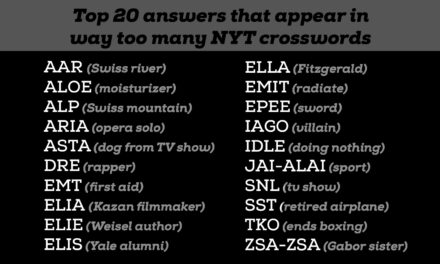In the original 1977 Star Wars movie, “Episode IV: A New Hope”, Han Solo makes two boasts about the performance of his ship, the Millennium Falcon. He says “she can do point-five past light speed”, and he says it “made the Kessel Run in less than twelve parsecs“.
The first statement, about faster-than-light travel, is generally accepted — because even though current scientific wisdom suggests that FTL is impossible, it would be difficult to have any speculative fiction about spacefaring cultures without it. We are accustomed to accepting the possibility, at least for purposes of enjoying a story.
But the second statement, which implies that a race was won in “less than twelve parsecs”, presents a huge problem. A parsec is a unit of distance. Specifically, a parsec is approximately 3.62 light years. Since “year” is a unit of time, it seems as if maybe a Star Wars writer mistakenly thought that parsecs measure time as well. After all, it sounds like a scientific variation of “second”, like “just a parsec there, buddy”… but it’s not. A parsec is the distance traveled by light in 3.62 years, and its value is equal approximately to 19,173,511,445,225 miles. That’s 19 trillion miles.
If you’re going to brag about a vehicle being fast in a race, you should be talking about the time it took to finish, not the distance, right?
That has been a long-standing grievance among Star Wars fans, myself included. 12 parsecs is 228 trillion miles. How can Han say his ship completed the “Kessel Run” in less than some number of miles?
At last, I have an answer!
There is one performance stat that’s measured in terms of distance, which is acceleration. Usually it’s braking: the distance required to stop from 60mph, for instance. But there’s no reason a distance couldn’t be applied to *increase* in speed, just as sports car makers advertise the speed a car achieves after a quarter-mile. For instance, according to Road & Track, the 2018 McLaren 720s will complete the 1/4-mile in 9.9 seconds at 148.2mph.
One could just as easily say the McLaren “can do the 148mph run in less than a quarter mile”. See where I’m going with this? If “Kessel Run” means “accelerate to a certain speed”, then you can measure performance with a unit of distance.
If the Kessel Run means “distance required to accelerate to a speed faster than an Imperial Cruiser”, for instance, then it’s not nonsense for Han to say “she can do .5 past light speed” (boast about top speed) and also that the Falcon “made the Kessel Run in under 12 parsecs” (boast about acceleration).
No, I haven’t been thinking about this on-and-off for the past forty years.
Postscript: Different problem. If the top speed is “point five past light speed”, then traveling 12 parsecs will take 29 years (12 * 3.62 = 43.44 years to travel 12 parsecs at speed of light, divided by 1.5c top speed, equals 28.96 years). Han does not appear old enough to have run this race multiple times as he implies. Unless traveling at/above light speed causes relativistic effects that distort time.




